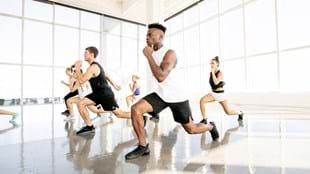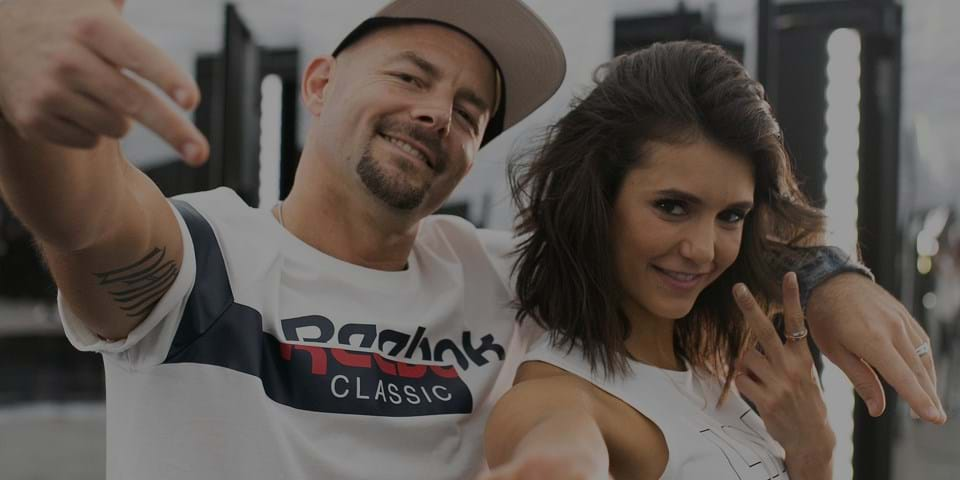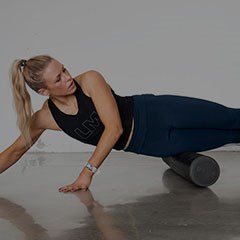Growing up, I played a lot of basketball and idolized a lot of my favorite New York Knicks players. As a young kid, I mimicked what I saw them doing because I wanted to be like them. When they went up for a jump shot, I thought the way some of them jumped with their knees caving in was a crucial part of their lift, so I purposely tried to do the same thing. It became a bad habit that took me many years to later undo. And in the years since, many of those players I idolized have had knee issues and surgeries to resolve chronic leg problems.
The culprit may well have been something known as “knee valgus”, and it is easy for exercisers to spot.
When looking at yourself front on in squat or lunge position (or while walking, running, or jumping), your knees should track out over the middle of the foot and stay there stably. If your knees move sideways in an inward direction towards the centerline of the body, it highlights an instability in the leg complex, and this is what we term knee valgus.
The large muscles of the leg (hamstrings and quadriceps) act on the knee joint to open and close it forward and backward like a hinge; that is the dominant plane of motion for the knee joint.
Why is knee valgus a problem?
Because of its anatomy, the knee is designed to handle primarily vertical forces. Any inward movement at the knee joint places excessive forces on the soft tissues around the knee and can result in damage. Over time, as a result of the repetitive stresses, pain can develop at the knee. It can also cause pain further up and down the leg (at the hip or ankle) as the deviation can transmit altered force production to areas above and below the knee.
The impact of an inward movement in the knee can affect the entire lower body.
What can you do about knee valgus?
Knee valgus can manifest congenitally or structurally, and in these instances, it must be treated by a professional. However, there are many scenarios where the issue appears as the result of a movement dysfunction. In these instances, rectifying the issue is as simple as becoming aware of the problem, and then mastering how to activate the body’s muscles in the proper way.
Having spent many years as a trainer, I can see that a lot of people don’t understand how to activate their side glutes to hold their knees out. As a result they squat with knees caving in, or run and jump knock-kneed, simply because that’s how they’ve always done it.
Knowledge is the first step. Being aware that this habit puts your joints in a vulnerable position may be enough to get you to focus on technique and start developing healthier habits.
How to overcome knee valgus
The key to overcoming this issue is to recognize that your body has developed this “muscle memory” over time and it will take a conscious effort to overcome it.
- Start by doing a set of squats, jogging, or jumping in front of a mirror. If you can't do that, film yourself with your phone camera.
- Perform the action slowly while concentrating on keeping the knee vertically above the middle of the foot. It may feel difficult or unnatural at first, because the muscles aren’t used to firing this way.
- Once it becomes more natural and you don’t have to consciously fight the old habit, start to add more intensity (i.e. move faster if you’re running or add weight if you’re squatting). You will begin to feel more burn in the glutes as those muscles start to get stronger.
Be aware that if you let your body slip back to the old way of doing things, you are further reinforcing the bad habit and making it more difficult to change.
My advice, is to take the time to focus on moving correctly rather than just moving for the sake of moving – you will find fewer aches and pains in the long run.
For ideas on how to train the side glutes, so that they are more likely to hold the knee in the right alignment, check out this article on top glute exercises.
If you want more tried, tested and true news from the leading edge of health and fitness sign up to get Fit Planet insights and advice straight to your inbox.

Alex Hernandez is a North Carolina-based BODYPUMP and LES MILLS GRIT trainer who also teaches BODYCOMBAT, BODYJAM, and BODYBALANCE. He is a proponent of purposeful training to improve movement and performance, embraces the idea of the unsteady state, and as a master trainer for Trigger Point Performance, he regularly shares his expertise in self myofascial recovery. He is also a mechanical engineer.








